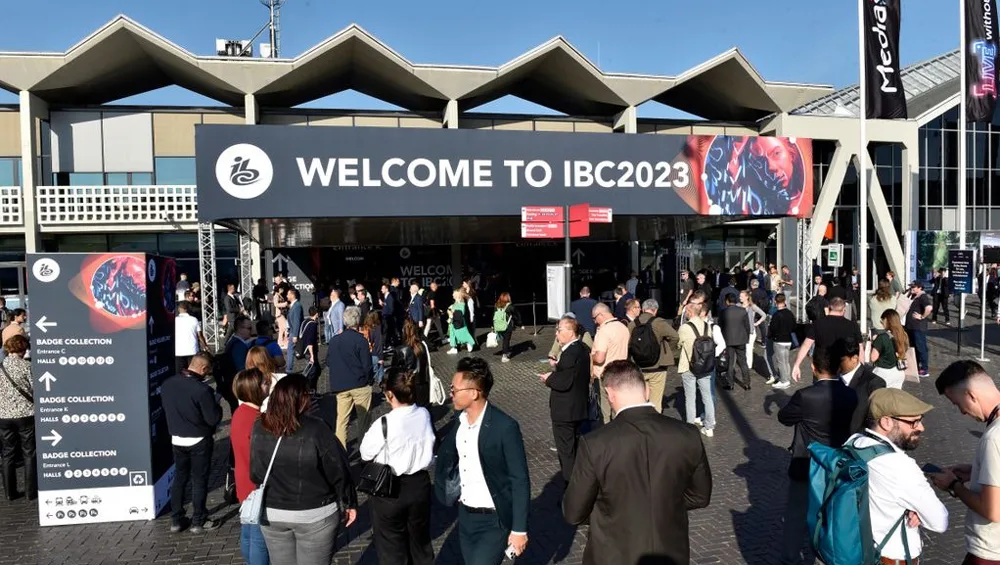
Efficiency Is IBC’s 2023 Mantra

AMSTERDAM — In the end, the whole of IBC 2023 might best be distilled to a single question, repeated innumerably from operators to vendors: How can I do more with less?
The tech show’s shortened, four-day schedule (Sept. 15-18) was an apt metaphor for this dynamic. Frugality would be too harsh a word to describe the vibe, but efficiency certainly was IBC’s driving inquiry.
The international broadcast industry, groaning under the weight of stubbornly persistent downward market pressure, was clearly on a diet this year.
But that didn’t mean it was all gloomy faces stalking the RAI’s halls, disoriented by its infamous lack of signage. Rather, attendance and energy levels were visibly high. The crowds outside were so thick that even Amsterdam’s throngs of scudding cyclists were compelled to periodically yield.
In its second year back from pandemic hiatus, there was a comforting air of normalcy restored at IBC, and for broadcasters with big upcoming projects slung over their shoulders, there were lots of questions:
- Where and how can efficiencies be found?
- How extensive of a transition to IP- and cloud-based workflows is prudent?
- Where is AI, far more than a buzzword now, impactfully intersecting these workflows?
- How are supply chain issues still having an impact, and when might the Hollywood strikes start having knock-on effects?
And finally, what is this business going to look like in six months to a year’s time?
Bigger Show, More Business
In the final tally, IBC ’23 drew 43,065 attendees, a little short of the 45,000 it projected but a 16% leap over the 37,071 it had last year. A strong number of its returning vendors were doing so in booths that were at least as big or larger, many bringing with them a bigger force than in ’22.
Lawo, the German vendor that returned with a booth resembling a brightly teched-up Black Forest, saw a perpetual scrum of people huddling near its virtual trees. “Basically, since the doors opened it’s been packed, so it feels like 2019,” said a smiling Andreas Hilmer, its CMO.
Alex Keighley, CRO of Telestream, said traffic was “massively busier than last year” when the show kicked off, buoyed by strong contingencies from the Middle East and Asia, from which attendees were largely absent last year.
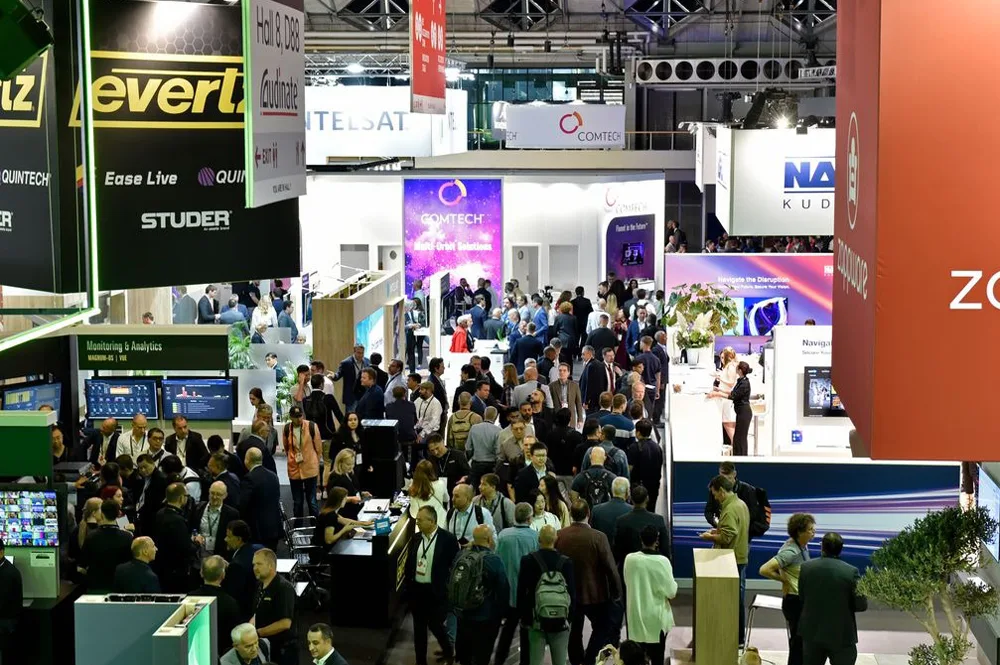 Ross returned with a booth roughly 25% larger from ’22 and about 30 more staff in tow to showcase a wider array of products. “We brought everything,” said Jeff Moore, SVP and CMO. “There’s nothing like being able to seat them and show them what we’re talking about.”
Ross returned with a booth roughly 25% larger from ’22 and about 30 more staff in tow to showcase a wider array of products. “We brought everything,” said Jeff Moore, SVP and CMO. “There’s nothing like being able to seat them and show them what we’re talking about.”
For vendors like Lawo, for whom the trip to Amsterdam was a short hop, it was a good occasion to bring a larger contingency of junior staff or interns. “It’s a great boot camp for support people,” Hilmer said.
Netherlands-based EVS also cycled a number of its younger people through. “It’s our backyard, so we can invite more people for the day or for the weekend,” said CTO Alex Redfern.
As to operators, however, Ronen Artman, VP of marketing at LiveU, noticed a reversal compared to vendors’ enlarged teams. “The delegations are still coming, but with fewer people than they used to,” he said. But, as Vitec VP of Marketing Bryan Reksten put it, “The right people are here.”
At times over the four days, that translated into sales. “We’ve closed a few deals while we’ve been here,” said Dejero’s Jeremy Miller, global director of technical account managers.
More often, though, it was an opportunity to check in with broadcasters who were somewhere down the long sales path to closing. “These shows are all about continuing customer engagement because sales cycles are longer than six months,” said Carl Fergusson, head of portfolio development at Mediakind. He added that the sales mode itself had shifted to a far more consultative approach rather than pushing a suite of products toward customers, echoing many other vendors at the show.
And IBC offered the ideal, unhurried environment to have those kinds of conversations, said Ken Frommert, president of ENCO. “What’s nice about here as opposed to NAB is we have more time to talk,” he said.
Efficiencies And Value
There was a resolute practicality among attendees, a mindset neatly summed up by Synamedia’s Elke Hungenaert, VP of product management. “The real metric has become profitability, so everyone is now feet on the ground,” she said. “Common sense has come back with everybody.”
For vendors, this meant presenting practical value propositions that came in many different permutations.
For Ross, “hyperconvergence is one of the trends that we’ve been driving,” Moore said. “We put more and more into one system,” which can save money in integration costs and make systems more flexible, he said.
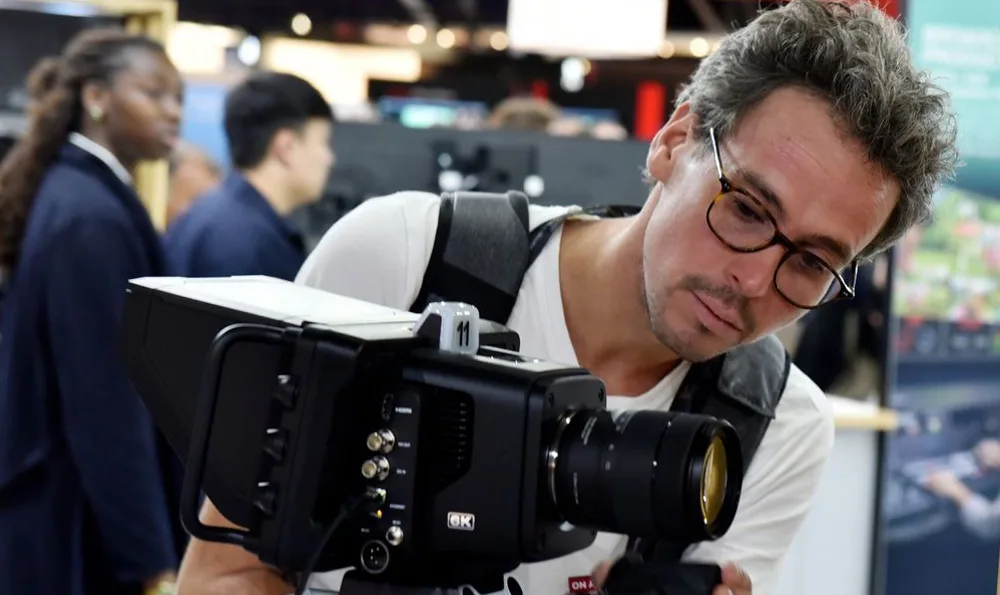 Harmonic emphasized a collapse in functionalities, workflows and applications — “doing more with less products and collapsing more and more things,” said Stephane Cloirec, VP of appliance product management. He said the company is driving more consolidation in its own portfolio, slimming down to a third of its previous product offerings.
Harmonic emphasized a collapse in functionalities, workflows and applications — “doing more with less products and collapsing more and more things,” said Stephane Cloirec, VP of appliance product management. He said the company is driving more consolidation in its own portfolio, slimming down to a third of its previous product offerings.
Collapsing and consolidating products also had environmental upsides touted by some vendors which, they posited, could lead to further cost savings. Riedel’s Sara Seidel, marketing manager for the Americas, said consolidating multiple applications into one panel was one way to reduce the hardware footprint, and bridging the worlds of IP and SDI is also helping to considerably trim travel costs.
“Travel and time to investigate is money,” agreed Yoann Hinard, COO of quality-of-service monitoring vendor Witbe, making the case that proactive monitoring saves on both.
Accedo’s Frederik Anderson, SVP of products, noted that 15-20% of the larger tier one RFPs his company receives now mention sustainability as a concern, which resonates with the Swedish company. “We’re trying to establish ourselves as a sustainable vendor,” he says, noting his own daughters were classmates of climate change activist Greta Thunberg.
Other Value Propositions
Dalet, which is seeing more broadcaster collaborations in line with the story-centric workflow it has been proselytizing for years, said it was about “making better use of the tools that they have,” said Robin Kirchhoffer, CMO. “As you have a master view of everything you do, you have a better synergy of tools.”
Automation was an important part of the efficiency narrative. “Automation companies have tools that can help media companies do more sophisticated productions with the same amount of people,” said Jim O’Brien, Aveco’s president.
Zixi was emphasizing a dramatic increase in the compute efficiency of its protocol at the show. “Doing more with less is really something we’ve seen over the last six months,” said John Wastcoat, its SVP of marketing and alliances.
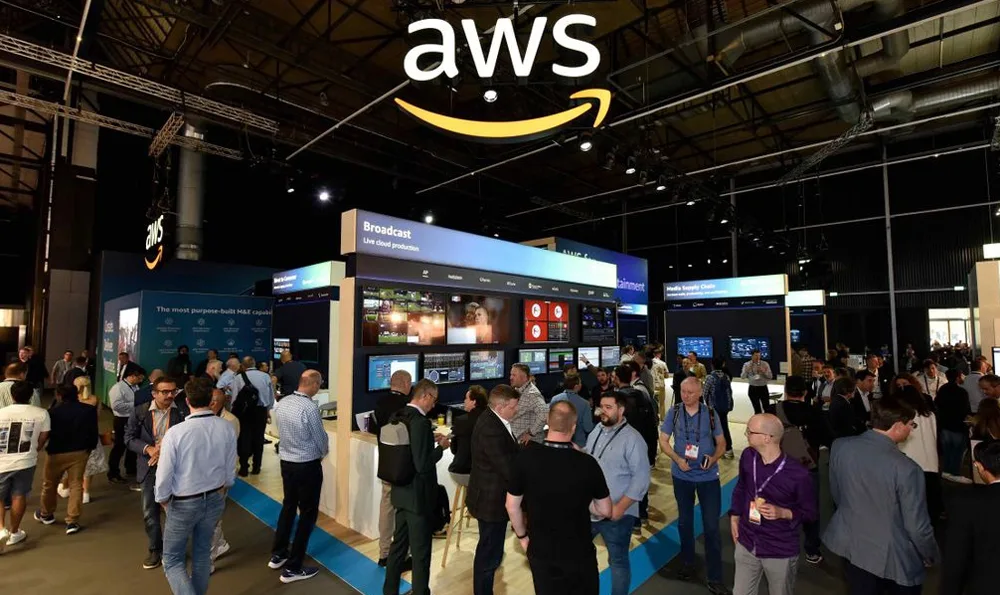 Virtual set vendors were making their own case on the value front. One of them was Rolf van Vegten, CMO of Zero Density. “If you implement it well and take a more holistic approach, it’s an opportunity to reduce costs,” he said, noting that graphics integration had become enormously simpler, usually requiring only one person to control the setup. The company planned to take that message to tier two and three companies.
Virtual set vendors were making their own case on the value front. One of them was Rolf van Vegten, CMO of Zero Density. “If you implement it well and take a more holistic approach, it’s an opportunity to reduce costs,” he said, noting that graphics integration had become enormously simpler, usually requiring only one person to control the setup. The company planned to take that message to tier two and three companies.
“Cost reduction is one of the best things about virtual production,” agreed Miguel Churruca, marketing director, virtual production, Brainstorm, noting that more mature technology had greatly simplified the process from just a few years ago, enabling even non-skilled operators to use it.
Nik Forman, marketing director of Friend MTS, even had a value proposition for investing more deeply in content security, noting that when the company detects piracy occurring, it can send subscription offers to the users who’ve been caught in the act.
The Hybridity Era
Notably softened in IBC’s overhead signage was the word “cloud,” a concept which had wafted earthward to amalgamate less dramatically with on-premise hardware for a more permanent—or at least indefinite—age of hybridity.
“I don’t feel like I need to evangelize moving to the cloud,” said SDVI CMO Geoff Steadman. “It’s a little more how do I do this and what use cases make sense.”
Steve Reynolds, president of Imagine, also said the need to proselytize the cloud’s value had passed. “We’re kind of through that proof point phase,” he said. “Where we are now is knowledge sharing. The skill sets to design, build and operate these IP-based systems was not widely distributed in the industry.”
Mediaproxy’s Rajesh Patel, VP of sales, EMEA, was deep into navigating cloud costs in client discussions. He said it was all about giving them options. “Does it really have to live in the cloud?” he said. “Can we do a hybrid option?”
Even if cloud’s costs can run higher than on-prem, SwXtch chief strategy officer and co-founder Geeter Kyrazis said there was still an upside to emphasize: “The cloud as a destination for workflow can be more expensive,” he said, but there’s no on-prem equivalent to its flexibility in spinning up pop-ups and new products when they’re needed.
There was a fair amount of assurance-giving at Globecast, where CMO Jean-Christophe Perier said, “There’s a medium level of anxiety with our customers on the pace and scope of transformation they’re going through,” he said. In fact, training and support have become so important that the company has added a consultancy line to its business.
And there was another kind of assurance happening at Grass Valley, which said it had just finished on the early side of a three-year business transformation plan and wanted to emphasize to operators that it was stable and profitable. “We really want to say to everyone that we’re still a hardware and software company, said Chief Product Officer Adam Marshall.
Sports-Related Opportunities
Even while Grass Valley pledged its ongoing allegiance to hardware, Marshall was quick to highlight where SaaS-based opportunities were important, drawing on the rapidly changing landscape of sports rights as a driver.
He said that where some rights used to extend two, three years or more, now they can be as short as a year. Cloud-based services can be spun up or down in literal days, he said, offering some essential flexibility.
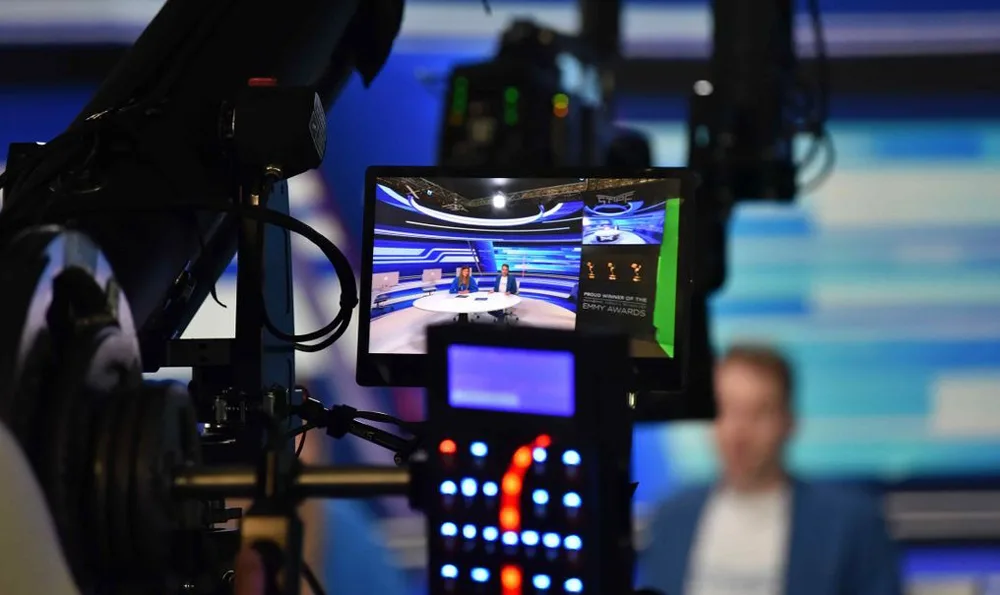 Sports came into the conversation in another way for TAG, which noted that the dissembling of the U.S.’s regional sports networks has been a boon to business, where clients among professional leagues and broadcasters are now growing.
Sports came into the conversation in another way for TAG, which noted that the dissembling of the U.S.’s regional sports networks has been a boon to business, where clients among professional leagues and broadcasters are now growing.
“The collapse of the RSNs has given the challenge to networks and leagues to take in content in whatever form they can,” said Robert Erikson, VP of live production. He said older, ingrained workflows have now been challenged, which has also resulted in cost savings. “It took a revolutionary mindset, and now we’re seeing that evolve,” he said.
For Vislink, sports, particularly the Olympics, was likely to spur some late-year shopping among some clients to which it was looking forward. Many would be looking for the “latest, greatest,” and IBC was an ideal venue “where you can prepare a deal and close it by the end of the year,” Michel Bais, chief product officer, said.
AI’s Omnipresence
There was nary a vendor who didn’t field questions about AI with frequency at the show, some of those inquiries being far more honed than others.
Many—if not most—companies have had some form of AI built into their software for years, such as Interra Systems was demonstrating, using with neuro-language capabilities for captioning and translation.
When pressed, vendors speculated that generative AI—the true hot topic within AI’s broad universe—would soon be able to interface with their user manuals and give helpful, flexible directions to clients with questions and troubleshooting needs.
Others, like Newsbridge, were already close to the bleeding edge of generative AI and absolutely giddy to show what it could do. CEO Phillippe Petitpont demonstrated scene description software that took tagging to a new level of complexity and comprehensiveness.
“The sooner you are doing the indexing, the more it will have value,” he said, noting that thorough tagging can save hours when it comes to content retrieval. He added that 99% of Newsbridge’s clients are now using the tool to build stories, a precursor, he teased, to the prospect of AI-edited video — if clients start to ask for it.
Avid was also excitedly looking ahead to AI’s future applications. Shailendra Mathur, VP of architecture and technology, runs the company’s R&D lab. “It’s a steep learning curve for most people because it’s very difficult to separate hype from reality,” Mathur said.
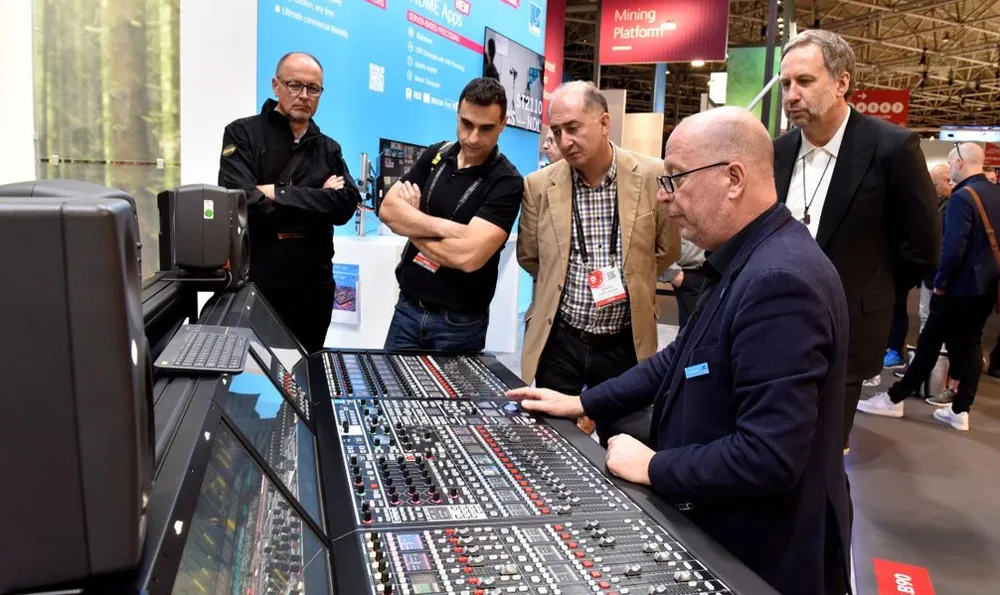 He said it’s critical right now for every vendor to develop responsible AI positions amid the many new concerns it will raise, and he noted that Avid had recently joined the Coalition for Content Provenance and Authenticity (C2PA) coalition to take a proactive role in content authentication. The company was also working with “do not learn” features to keep AI from scraping content without permission.
He said it’s critical right now for every vendor to develop responsible AI positions amid the many new concerns it will raise, and he noted that Avid had recently joined the Coalition for Content Provenance and Authenticity (C2PA) coalition to take a proactive role in content authentication. The company was also working with “do not learn” features to keep AI from scraping content without permission.
Supply Chain Improvements And Hollywood Strikes
If generative AI presented some daunting new challenges ahead, at least one major pandemic-era problem was largely turning a corner.
Ciro Noranha, CTO of Cobalt, spoke for many vendors in seeing much more easing on supply lines, though he remained vigilant. “We manage our supply chain very carefully,” he said. “We stock components and have a fair amount of inventory on the shelves. That helped us grow the business because other people couldn’t deliver.”
Brad Wall, CTO of LTN, put a finer point on the recovery. “Writ large it’s better than it was a year ago,” he said, noting delays had shifted from 8-12 months to 3-6 months. But “my gut tells me we’re still a couple of years from getting back to normal,” he cautioned.
While vendors had yet to see adverse effects from the Hollywood writers’ and actors’ strikes, meanwhile, many felt that the longer they drag on, the likelier they are to impinge on media and entertainment’s intricately connected ecosystem.
“It has an effect of bringing people down generally,” said David Dowling, CRO of Pixotope. But despite a “miasma of feeling” the strikes induced, “it’s probably not as bad as people think.”
The Business Outlook
While the strikes remain, for now, distant thunder for tech vendors, other concerns were more in the foreground. One was the ever-present prospect of mergers and acquisitions. Some companies, like Audinate, weren’t shy to concede that they’re in the hunt. Others, like Aveco, were quick to point out they were debt-free and well shielded from being hunted.
Pixotope’s Dowling said the climate was ripe for more activity. “I think you’re going to see more mergers and acquisitions,” he said. “There’s a general feeling that there are an awful lot of vendors out there and not enough customers.”
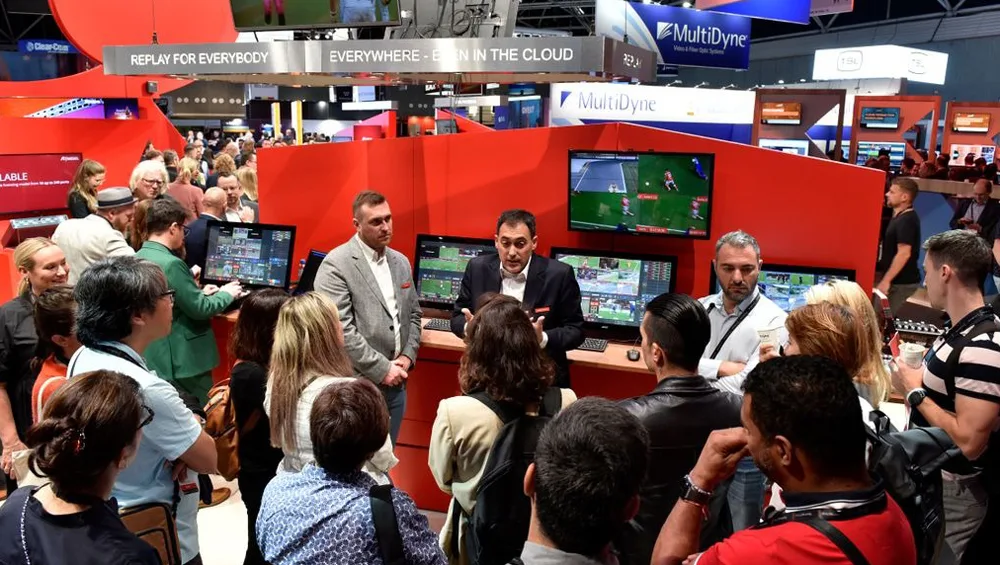 Even in the smaller world of fellow virtual production vendors, Dowling foresaw constriction. “The cream will come to the top,” he said. “Generally, it’s healthy. The people doing the most innovative things who have the most solid business model are the ones who are going to thrive.”
Even in the smaller world of fellow virtual production vendors, Dowling foresaw constriction. “The cream will come to the top,” he said. “Generally, it’s healthy. The people doing the most innovative things who have the most solid business model are the ones who are going to thrive.”
And as to business models, Lawo’s Hilmer had some words of caution. “This year looks like it’s becoming a record year,” he said. “However, I would not take this as the new normal.
“Consolidation makes it hard to predict where the post-pandemic norm will be,” he added. “I’m of the conviction that it won’t be where it was before.”
All of which means that tech vendors, like broadcasters, had better heed the law of the jungle and adapt or die. For Synamedia’s Hungenaert, herself a 25-year veteran of the industry, something feels historically different about this moment, the rumblings of which could be felt all around IBC.
“We need to be much more agile, faster and have off-the-shelf solutions that we can give at a faster pace,” she said. “Just like our customers need to reinvent themselves, we need to reinvent ourselves as well.”
































Comments (0)